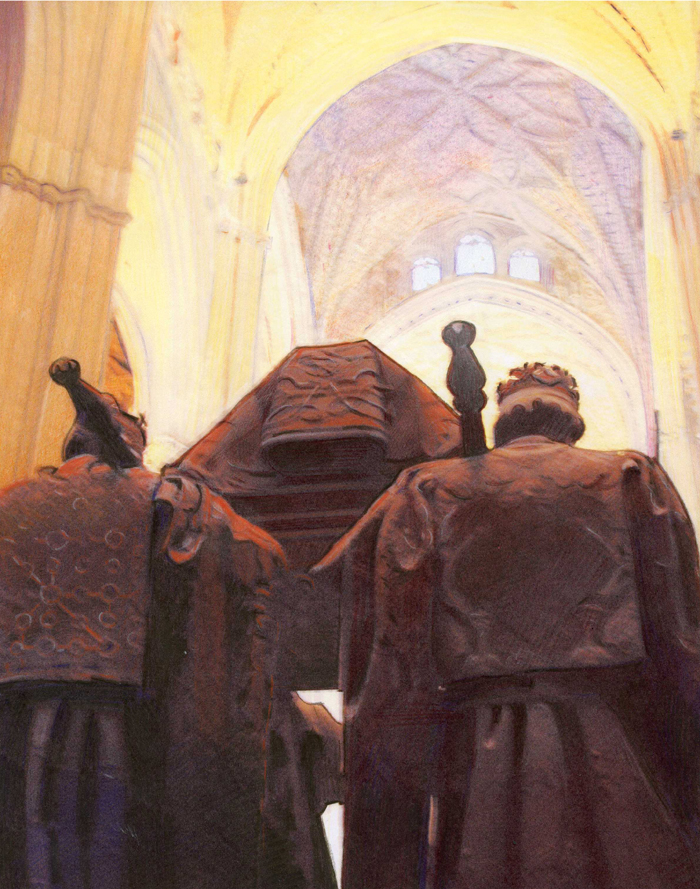
|

|
TOMB OF COLUMBUS
Pastel and Colored Pencil
16 x 20
Who is buried in Columbus' tomb? Actually, that's not an unreasonable question because 500 years after his death
the issue is still under debate. It is generally accepted that the remains of Christopher Columbus are interred in Seville Cathedral, but the route that his body took to get to that place has been somewhat convoluted over time. The remains were
first buried in Valladolid and then at the monastery of La Cartuja in Seville but in 1542, at the insistence of
Columbus' son Diego, his body was transferred to Santo Domingo in eastern Hispaniola. When the French took over Hispaniola
in 1795 the body was moved again, this time to Havana. Cuba became independent from Spain following the Spanish-American
War in 1898, and Columbus was moved for the fourth time back to Seville and laid to rest in the Cathedral. The remains
were put into an an elaborate catafalque, and the sarcophagus is carried by the statues of four king each representing
the Kingdoms of Castile, Leon, Aragon and Navarre. Christopher Columbus, it seems, traveled almost as far after he was
dead as he did during his three famous voyages to the New World. After his supposedly final interrment, a lead box bearing
an inscription identifying "Don Christopher Columbus" and containing fragments of bone and a bullet was discovered at Santo
Domingo in 1877 thereby issuing the question "How many bodies of Christopher Columbus are they and where are they buried?"
It wasn't the Tomb of Columbus that first impressed me when I entered the Cathedral; it was the unearthly golden glow
that fills the entire interior of the vast space, an illumination that comes from light reflected off of the vast Gothic
retablo of 45 carved scenes from the life of Christ. This work of Art was the lifetime labor of a single craftsman, Pierre
Dancart, and it is the masterpiece of the cathedral. Not only is it the largest and finest example of Gothic
woodcarving in the world, the entire height and breadth of it is covered in sheets of solid gold; Aztec gold, brought to Spain
from the Americas.
This image shows the nave of the Cathedral illuminated in that heavenly light in contrast to the dark sillouette of the
Tomb of Columbus, held aloft for eternity by the four kings of Spain.
(For an interesting perspective on the world as seen through the eyes of the great explorer, view the image of the Columbus Map.)
|

|

|


